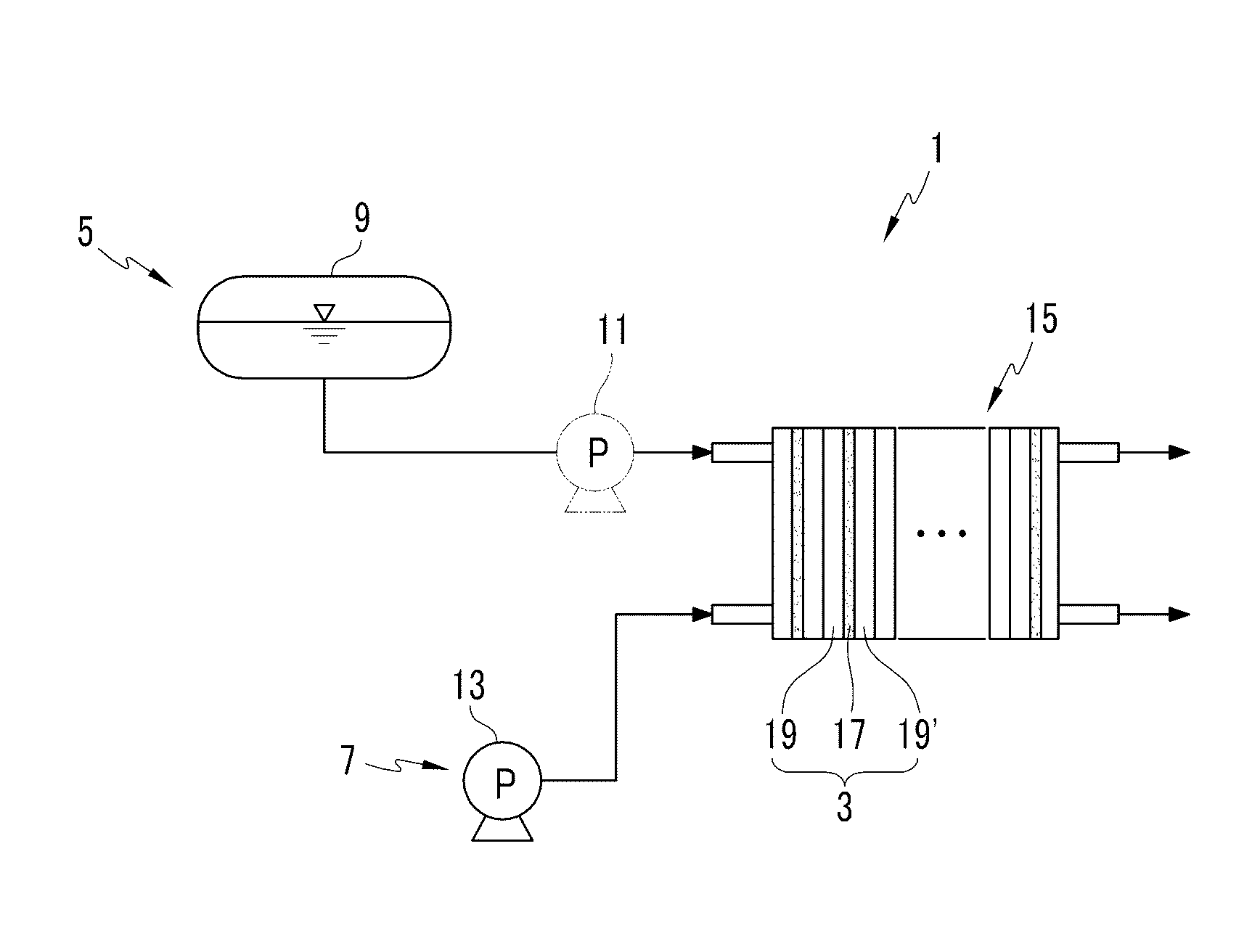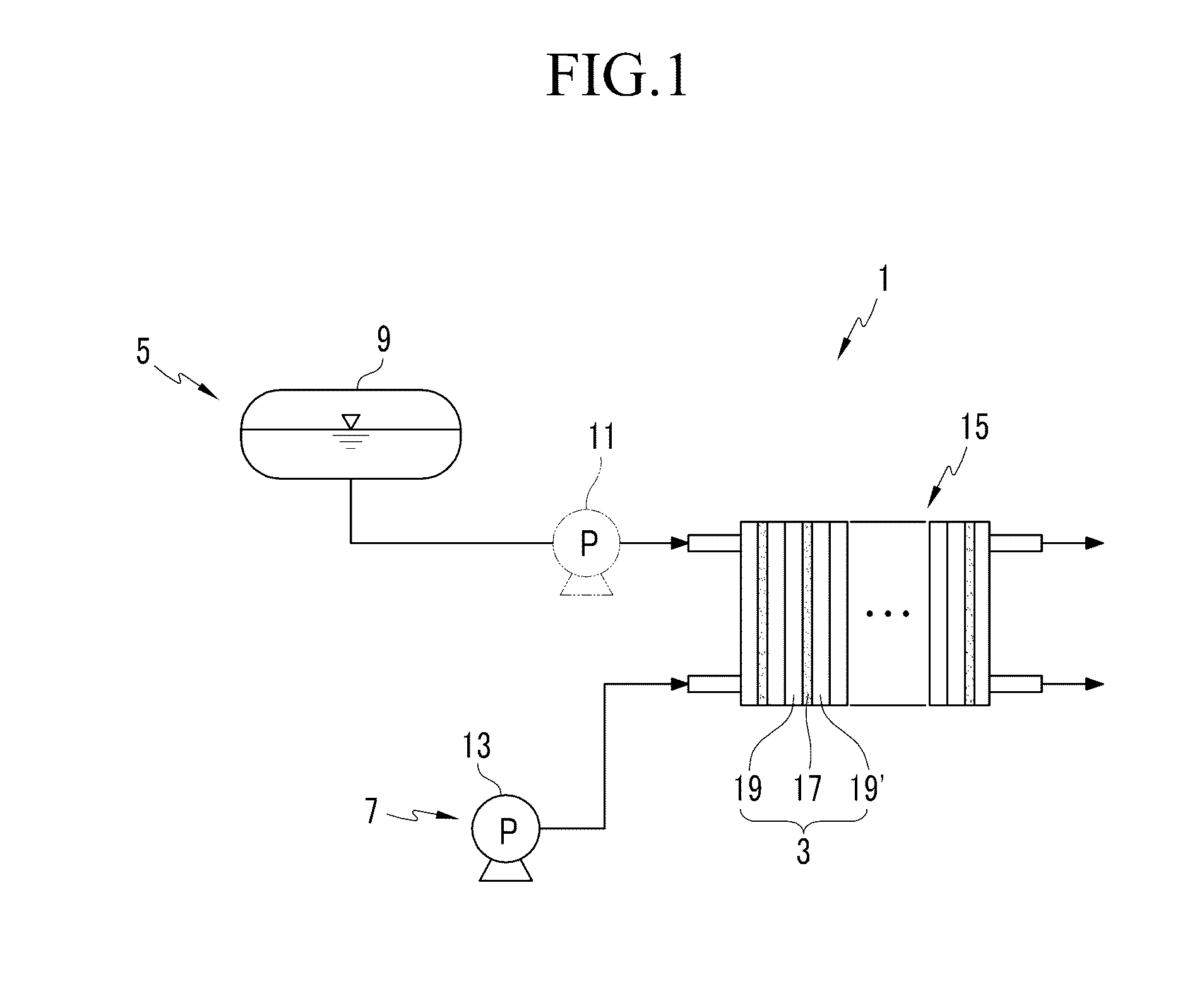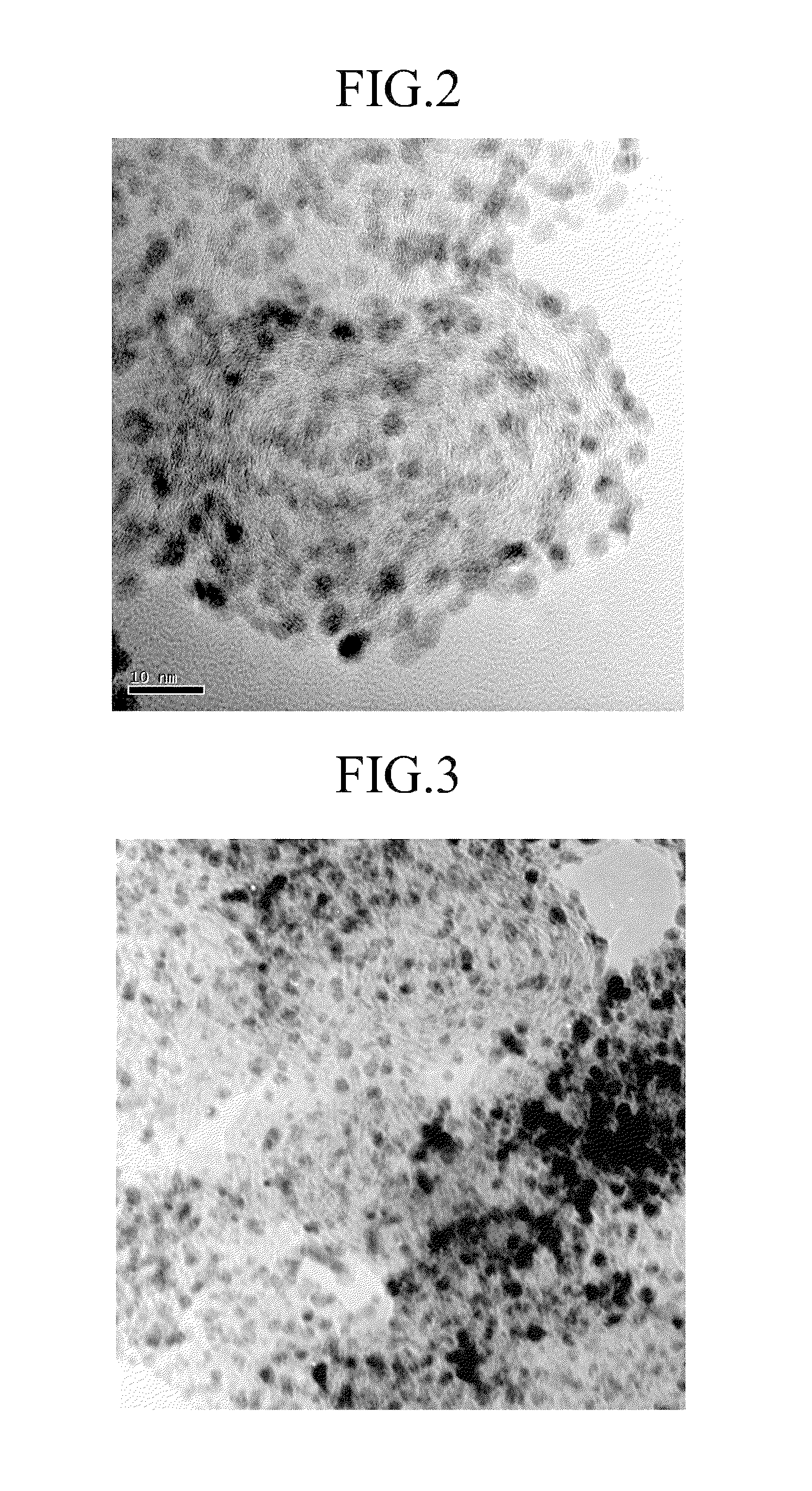Catalyst for fuel cell, membrane-electrode assembly including same, and fuel cell system including same
a technology of membrane-electrode assembly and fuel cell, which is applied in the direction of cell components, metal/metal-oxide/metal-hydroxide catalysts, physical/chemical process catalysts, etc., can solve the problems of handling hydrogen gas and achieve excellent efficiency characteristics and improve the performance of the fuel cell system
- Summary
- Abstract
- Description
- Claims
- Application Information
AI Technical Summary
Benefits of technology
Problems solved by technology
Method used
Image
Examples
example 1
Preparation of a Platinum Catalyst
[0051]A precursor solution was prepared by dissolving 2.5 g of a chloroplatinic acid compound (H2PtCl6.xH2O including about 38 to 40 wt % of Pt, Aldrich Co. St. Lou, USA) in 14 ml of distilled water in a reactor.
[0052]Next, 14 ml of the precursor solution was added to 1 g of a Ketjenblack® (Mitsubishi Chemical, Japan) carrier and they were mixed through a common incipient wetness method.
[0053]The mixture was dried. Then, the dried product was fired at 200° C. under atmosphere including 10 volume % of hydrogen and 90 volume % of nitrogen, preparing a catalyst for a fuel cell in which platinum is supported in a Ketjenblack® carrier. Herein, the catalyst for a fuel cell was examined using a transmission electron microscope (“TEM”). The result is provided in FIG. 2.
[0054]The catalyst for a fuel cell included 48 wt % of platinum supported by 52 wt % of a carrier based on 100 wt % of the entire amount of a catalyst.
[0055]The platinum had an average partic...
example 2
Preparation of a Platinum Catalyst
[0060]A precursor solution was prepared by dissolving 2.5 g of a chloroplatinic acid compound (H2PtCl6.xH2O including Pt in an amount of about 38 to 40 wt %, Aldrich Co.) in 14 ml of distilled water in a reactor.
[0061]14 ml of the precursor solution was added to 1 g of a Ketjenblack® carrier and they were mixed through an incipient wetness method.
[0062]The mixture was dried. The dried product was fired at 400° C. under atmosphere including 10 volume % of hydrogen and 90 volume % of nitrogen, preparing a catalyst for a fuel cell including platinum supported in a Ketjenblack® carrier.
[0063]The catalyst for a fuel cell included 48 wt % of platinum supported by 52 wt % of a carrier based on 100 wt % of the entire amount of the catalyst.
[0064]The platinum had an average particle diameter of about 4.8 nm when analyzed using XRD using CuKα ray, (model number PW1710, PHILIPS Co., Netherlands). Since platinum has density of 21.45 g / cm3 at 25° C., the density...
example 3
Preparation of a Platinum-Cobalt Alloy Catalyst
[0077]A precursor solution was prepared by dissolving 2.5 g of a chloroplatinic acid compound (H2PtCl6.xH2O including Pt in an amount of about 38 to 40 wt %, Aldrich Co.) in 14 ml of distilled water in a reactor.
[0078]14 ml of the precursor solution was added to 1 g of a Ketjenblack® carrier and they were mixed through in an incipient wetness method.
[0079]The mixture was dried. The dried product was fired at 200° C. under atmosphere including 10 volume % of hydrogen and 90 volume % of nitrogen, acquiring a product including platinum supported in a Ketjenblack® carrier.
[0080]Next, (Co NO3)2.6H2O, a cobalt precursor, was added to 10 ml of distilled water to prepare a cobalt solution. The product was dipped in the cobalt solution in an incipient-wetness method. Herein, platinum and cobalt were mixed in a mole ratio of 3:1.
[0081]The mixture was dried. The dried product was fired at 500° C. under atmosphere of 10 volume % of hydrogen and 90 ...
PUM
| Property | Measurement | Unit |
|---|---|---|
| dispersity | aaaaa | aaaaa |
| particle diameter | aaaaa | aaaaa |
| particle diameter | aaaaa | aaaaa |
Abstract
Description
Claims
Application Information
 Login to View More
Login to View More - R&D
- Intellectual Property
- Life Sciences
- Materials
- Tech Scout
- Unparalleled Data Quality
- Higher Quality Content
- 60% Fewer Hallucinations
Browse by: Latest US Patents, China's latest patents, Technical Efficacy Thesaurus, Application Domain, Technology Topic, Popular Technical Reports.
© 2025 PatSnap. All rights reserved.Legal|Privacy policy|Modern Slavery Act Transparency Statement|Sitemap|About US| Contact US: help@patsnap.com



